Boho Motifs and Their Meanings
New to Luneville embroidery?
Start with the chain stitch—my free visual guide shows you exactly how
Boho is read on the surface. Before silhouette, it’s the motifs — how they’re stitched, placed, layered, or beaded — that carry most of the design information. This overview looks at six recurring motifs and how embellishment turns them into working parts of a garment.
Florals
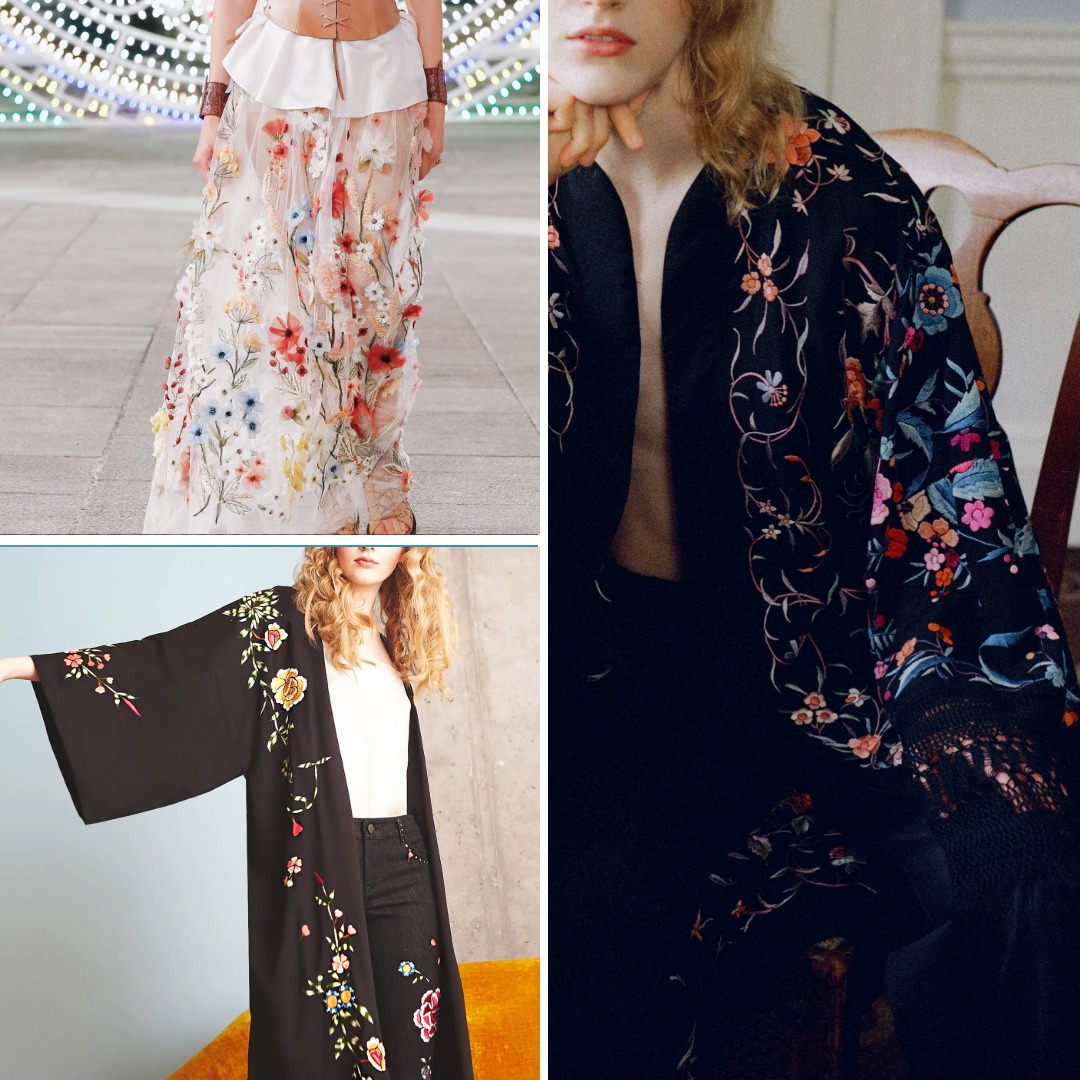
Florals scale well and translate across techniques. In embroidery they’re built with satin, long-and-short and seed stitches; in appliqué they’re cut, layered and edge-stitched; in beading they’re anchored with matte seed beads or flat paillettes to keep movement soft. Placement is engineered — yokes, cuffs, borders — to protect drape on voile or chiffon, or dispersed as light repeats on tulle.
Paisley (Boteh)
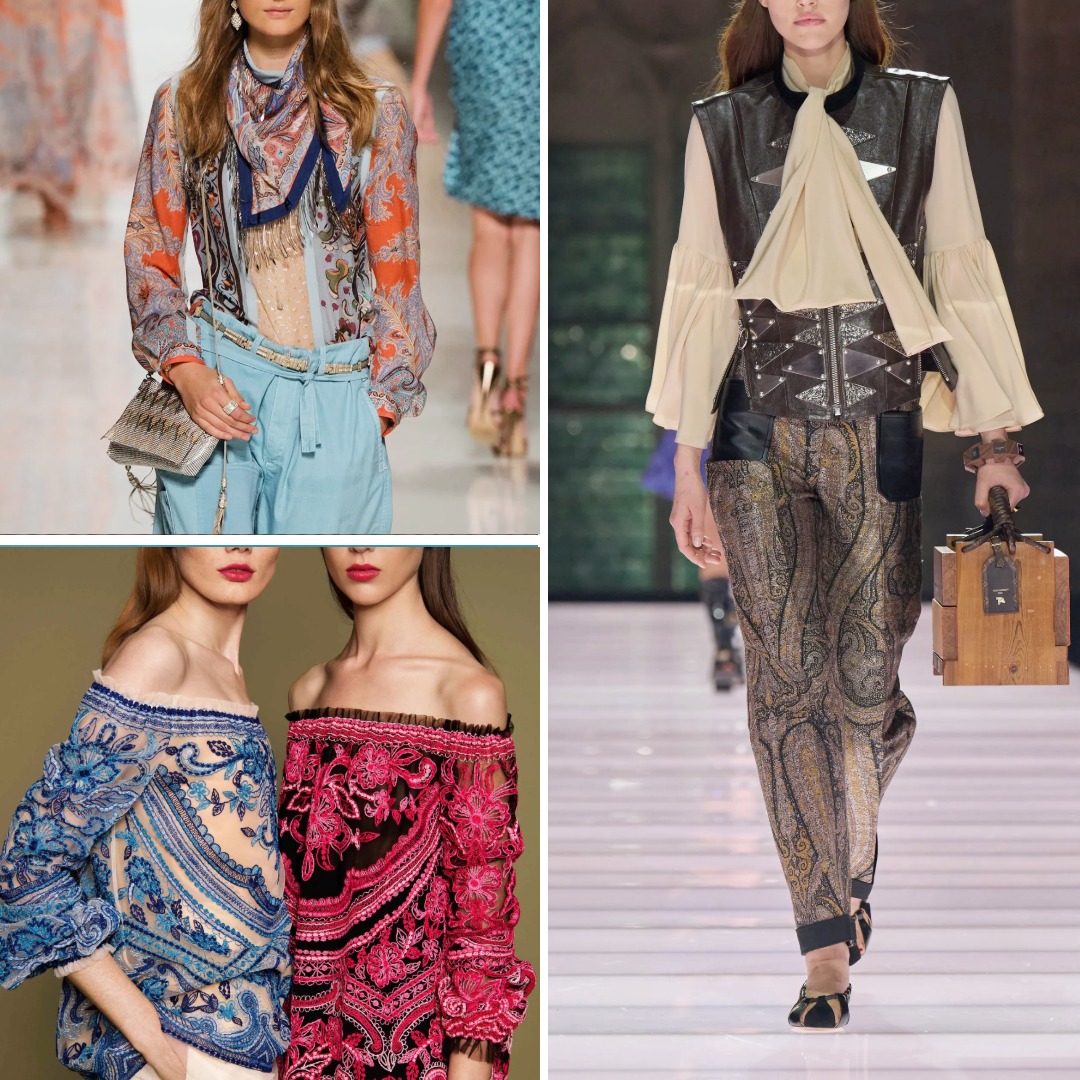
Paisley’s curved teardrop has a built-in rhythm that adapts easily across fabric surfaces. In embellishment, it works as both outline and field: a single motif can be framed with metallic thread or beads for emphasis, while scattered repeats dissolve into all-over texture on sheer georgette. The shape carries a long association with woven shawls, but in contemporary fashion it reappears through print layered with embroidery, giving the motif depth and movement. Etro, long connected to paisley, often pairs printed grounds with stitched details.
Celestial (Stars, Moons, Suns)
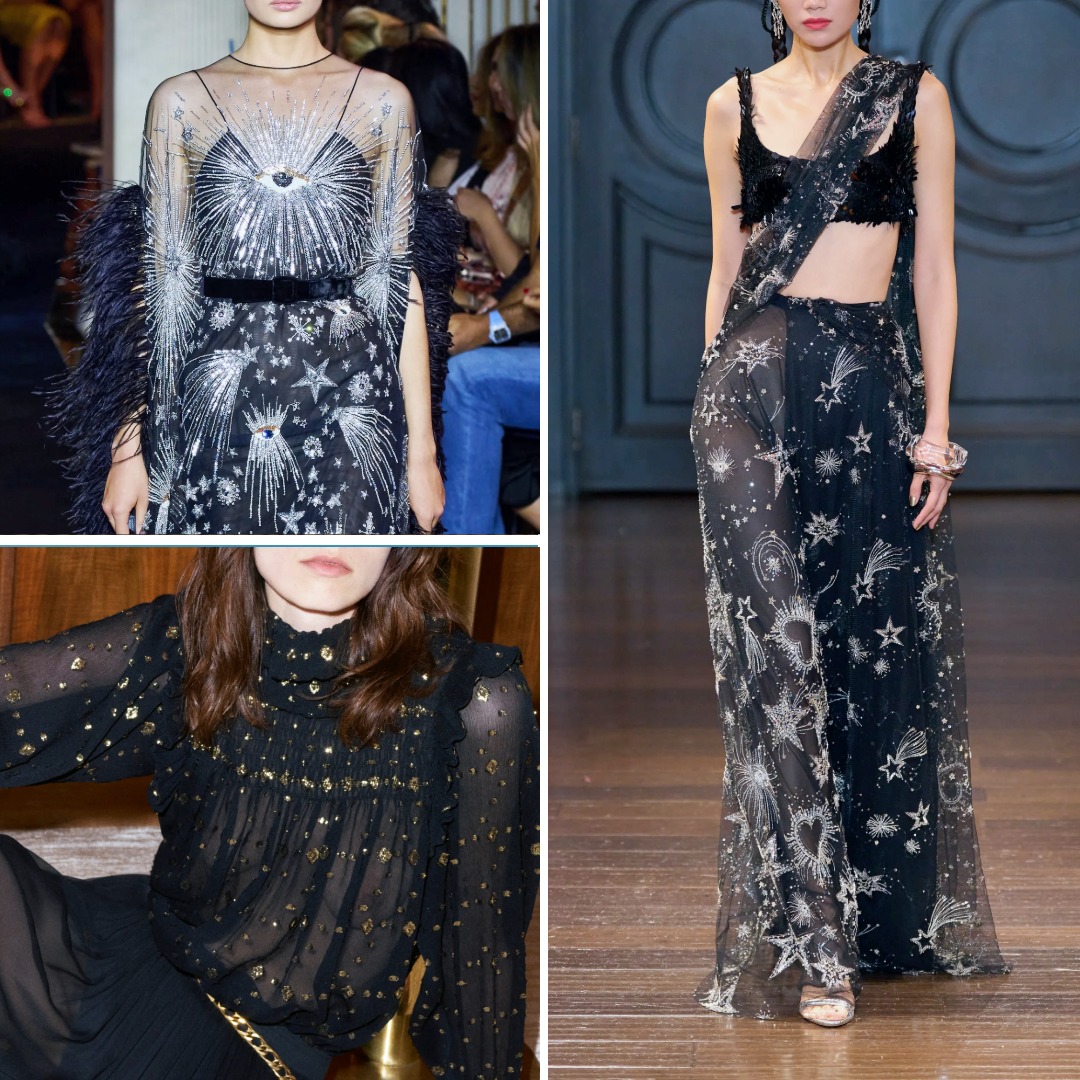
Celestials work best small and with controlled shine: moons couched; stars as straight-stitch bursts or tiny beaded clusters; suns with radiating stitch in matte metallic thread. Designers place them at necklines, shoulder yokes, cuffs and hems so they read like constellations, not dense fill.
Birds & Feathers
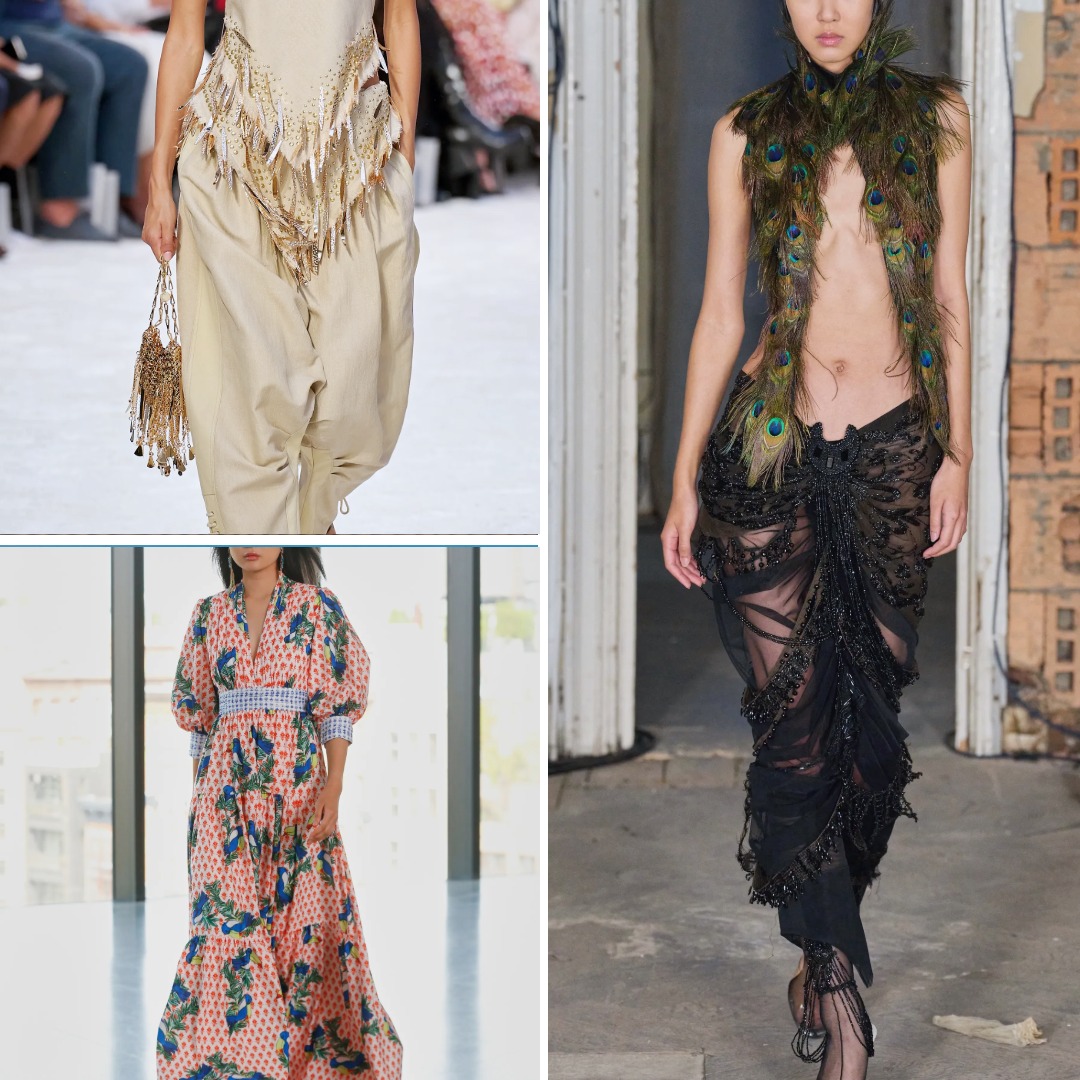
Birds introduce direction and line; feathers provide rhythm. Embroidered birds are mapped with satin and split stitch for the body, fine straight stitch for feather texture, and a tight outline to prevent distortion on lighter grounds. Feather motifs often shift to fabric: layered chiffon or silk cut as barbs, tacked at the quill so the edges move; occasionally a bead tassel at the tip to emphasise swing. Designers use wing spans across back yokes or skirts to create lateral motion; vertical feather rows lengthen the body visually.
Eyes, Hands, and Protective Emblems
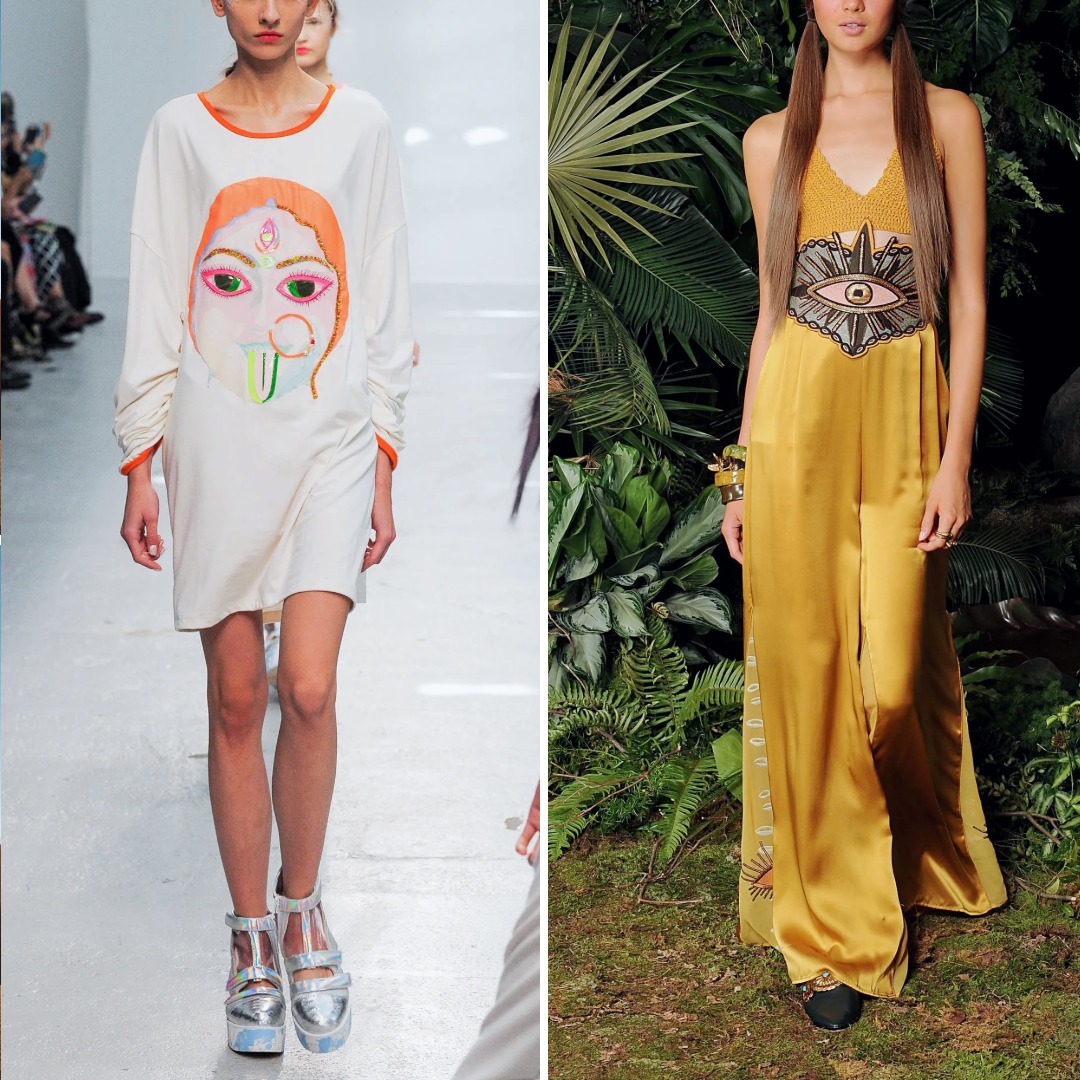
Protective symbols are small, direct, and work best as discreet placements. An “evil eye” is a satin-stitched ring with a bead pupil; mirrors (shisha) can be secured with buttonhole stitch for a bright centre. Hand motifs are outlined in backstitch, then infilled with dots or tiny florals. Designers position these emblems on pocket corners, collar points, sleeve plackets, or bag flaps so the meaning is clear and the scale never tips into costume. You’ll see this language across accessories as often as apparel.
Geometric and Folk-Inspired Patterns
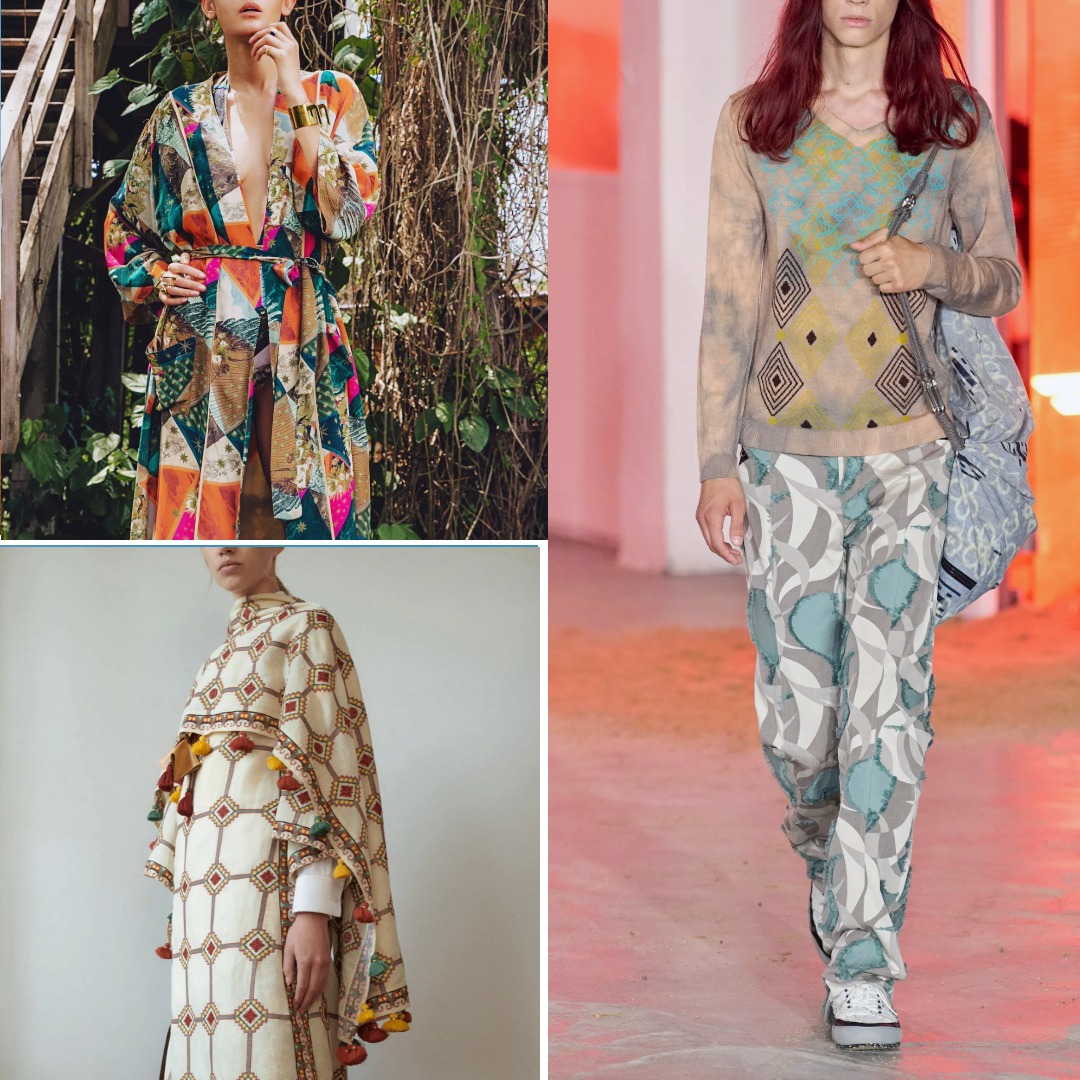
Diamonds, chevrons, and stepped lines connect boho to a wide set of folk textiles. In stitch they appear as cross-stitch borders, herringbone seams, running-stitch chevrons; in trims as braid, soutache, and woven tapes; in patchwork as pieced diamonds or strips with pressed seams and visible top-stitch. Geometrics provide structure under softer motifs — florals sit cleanly inside a gridded framework, giving the eye order while the cloth keeps its ease.
Why Motifs Matter
Motifs in boho aren’t decoration added at the end; they’re design decisions that affect drape, weight, and read. Stitch density, bead finish, appliqué edge, thread choice, and placement all change how a garment moves and how it’s understood. Knowing the motif — and how to build it — lets designers specify provenance and intent directly on the surface of the cloth.
Exploring Boho Fashion in Depth
Boho is set to return in 2026 — but not in the usual commercial way. For designers, stylists, and creatives, it’s a chance to revisit a style that combines freedom, heritage, and craft. That’s why I’m running a series of articles unpacking what boho really means — beyond clichés.
I’m writing from the perspective of a textile artist and embroidery designer, exploring boho not just as a style, but as a design language: full of references, rooted techniques, and evolving visual codes.
Boho Style: A Brief Fashion History
Where the aesthetic comes from — and how it’s been shaped by art, politics, and pop culture.A Vocabulary of Embellishment in Boho Fashion
What details make boho recognisable? From embroidery to fringe, a breakdown of core techniques.Boho Motifs and Their Meanings
Symbols at the heart of boho design — from florals and paisley to birds and celestial imagery.
More coming soon.
Written By
Ksenia Semirova
MA Textiles
An experienced hand embroidery and textile artist based in Hove, UK. Professionally practicing since 2021, mastering various techniques.
Also a fine artist and visual researcher, exhibiting her works across the UK and internationally.
Join my mailing list
Get the latest and greatest updates to your inbox!